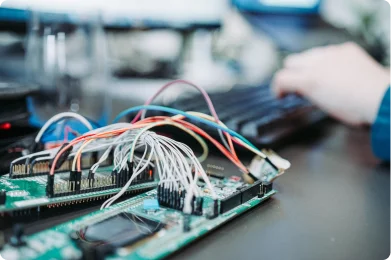 More and more people are turning to BYOD in their work place but not many people fully understand the implication of applying BYOD. How should BYOD be distributed among employees? How much of a discount should be awarded? Should the company really take on the expenses for BYOD? We’ll answer these questions and more.
More and more people are turning to BYOD in their work place but not many people fully understand the implication of applying BYOD. How should BYOD be distributed among employees? How much of a discount should be awarded? Should the company really take on the expenses for BYOD? We’ll answer these questions and more.
Gartner recently updated their April 2014 report that extensively explained BYOD usage and application due to a court case in California from August 2014 that obligated organizations to compensate employees for BYOD. Since then, many things changed and more organizations began pushing to subsidise user-owned devices.
Presently there are many questions being asked about BYOD as a result of the court ruling. Some organizations are adopting the new policies meanwhile others who already have BYOD are reviewing their policies and making various changes in areas, ranging from issued amounts due to changing terms, lower monthly rates for carrier plans, changing user expectation and maximizing telecom cost efficiency.
Gartner uses the acronym SRA synonymously with subsidies. According to Gartner the definition for SRA are:
S – for stipend, which is defined as a fixed sum paid periodically (usually monthly, but increasingly less frequently, as with quarterly payments) to defray a specific expense; it is usually added on to an employee’s regular pay as a gross-up on his or her paycheck.
R – for reimbursement, defined as a payment to the employee for a business expense, typically after the expense has been incurred and in response to the employee filing an expense report.
A – represents allowance and is defined as a fixed amount of money allocated on a periodic basis (often, per year) for an employee to spend on specified goods or services related to his or her job. This is the least common way of handling BYOD subsides.
Is BYOD Right for my organization?
Organizations should first assess if they should compensate their employees for the connectivity or hardware expenses gained from using their personal mobile devices. In order to determine if SRA is something that your organization should provide. You have to look at your organization’s legal and regulatory requirements, contractual needs, the employee culture and the overall objectives of the BYOD program.
Legal requirements are based on the labour laws of the area that your business resides and can change from region to region so pay special attention to that. Be sure to work closely with a legal team so that they can help you through all the legal issues.
Contractual requirements: : enterprises that have contract agreement with labor unions or work unions may be obligated to give financial compensation for employees who use their own personal equipment.
Organizations must also be aware of the employee culture as BYOD might be viewed differently depending on your job description, BYOD can be considered as a perk for some, as a privilege to others or they may see the whole BYOD as bring your own dollars. One way of counteracting the negative perceptions of BYOD is to inform employees about it in advance. Make certain that the means of communication is clear and that the content of the message is correct.
It’s all about the goals. If the company’s goal is to maintain the corporate-owned devices and open it up to other employees to increase productivity, then SRA’s will provide a useful way to encourage workers to BYOD. However, if the program’s goal is to diminish costs then a fixed rate for SRA can be effective in limiting enterprise spending for mobile devices and services.
What is the point of using SRA?
The point of using SRA is to share the responsibility for the device with the end user. Gartner argues that enterprises should not take on the total cost of supporting a BYOD model because the responsibility and the authority to manage costs are two different things. The organization has the authority to manage cost but it’s the employee’s responsibility to manage how it’s used.
How should SRA be distributed for BYOD?
It is very important when using BYOD that you provide policies in clear terms of which users, devices and services can be subsidised.
When deciding which employee qualifies for an SRA, it is very important not to frame it as a benefit. Eligibility for SRA should be based on job requirement, (are they working in an area where there aren’t any landline? Are they on call or are they work after hours?), role requirements (C level executives or sales associated who need to stay in contact with managers and customers.) mobile device requirements (Is there an app that is essential for that employee to do his work?).
Is BYOD for all Employees?
Please consider employees who travel internationally often as BYOD would not be cost efficient as the roaming data charges will significantly add up. Companies usually negotiate with carriers to minimize the roaming data charges which makes using the company owned device mandatory for the employee. Gartner recommends using organizationally owned loaner devices for travelling to foreign countries.
How should SRA be organized?
Gartner recommends using Tiered based model to help manage SRA distributions.
Group 1: High Mobility: Employees who travel a lot or are out on the field.
Group 2: Limited Mobility: Employees who are working out on the field but also in the office.
Group 3: Approved nonessential mobile access: Employees who would not have received the BYOD under normal circumstances. These employees must receive authorization from the management before attaining the device. This will be the largest number of people in this tier.
Gartner recommends to choose a system based on the different eligible roles and not so much on the number of tiers. They also recommend for organizations to determine if one of the two options would be more feasible for its organizations: (1) a single fixed amount across the organization or (2) tiered rates according to the role. In most cases tiered model is cheaper and satisfies user expectation along with legal demands.
What purpose would there be in having different groups for BYOD?
Permitting a large group of tier 3 (unsubsidized employees) to have access to BYOD will give the organization the ability to enfranchise mobile business computing. Thereby substantially lowering the cost of mobile computing capability compared to traditional approaches. Since these users do not have a business purpose, a large amount of them will be unsubsidized which will enable the organization to provide mobile capability at a lower cost.
Should employees be given the right to have SRA on multiple devices?
No. Gartner recommends that guidelines be established so that users will only be limited to an SRA for the main mobile device and cannot be applied to any secondary or following devices.
Make sure not to pay the full monthly fee of the phone only pay a portion of it. According to Gartner less than 2% of the companies actually pay for the full subsidy.
How can I compare my SRA to other organizations? How do I know if what I set as an SRA is acceptable?
Use Industry average as means to find out how much other companies are paying terms for devices and services. According to recent studies the global subsidies for Group1 and Group 2 are $44.18/ month.
The SRA average for Group 1 is a little over $50 / month and the Group 2 users receive an average of only $23 dollars a month. There is speculation as to why these SRA levels are so low.
- The retail cost of wireless carrier plans have decreased during the past two years. Unlimited voice/text plans isn’t uncommon anymore and cost per gigabyte has fallen dramatically.
- Organizations with mature programs use historical data to optimize SRA spend.
- Organizations new to BYOD will generally provide higher SRAs to prevent employees from believing that BYOD stands for bring your own dollars.
- Labor laws in different locations may affect BYOD programs force organizations to be more aggressive with their initial subsidies.
Managing Payments of subsidies is a balancing act between cost and convenience which can be tricky at times. Most organizations manage their payments using:
- Fixed payment through allowances or stipends
- Business expense reimbursement
These two methods are mainly different when accounting and tax principles are applied. In order to find out which route is best for your business please consult your HR and legal teams as accounting and tax principles change depending on location.
The tricky thing about BYOD is that you need to be able to distinguish when the employee uses their device for personal usage and for business usage so that the organization can apply the SRA to the business use of the device.
Who can help with managing the costs of BYOD?
Yes, there are third parties that keep track of how the device is being among many employees. There are TEM (telecom expense management), EMM (enterprise mobility management) and even wireless carrier themselves.
If that’s you then we have a solution for you. Cimpl helps organizations take back control of wireless expenses. Having a third party take care of keeping track of your mobility expenses allows you to focus on other projects that are more critical. Cimpl has helped many customers better understand how they are spending money on (devices and services) on a granular level. With this information it is simple to make the best decisions to save time and save money so you can reinvest it in other projects.
//



